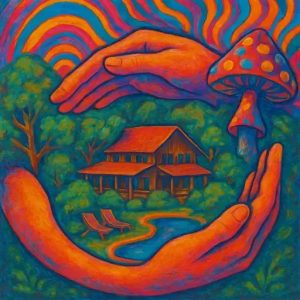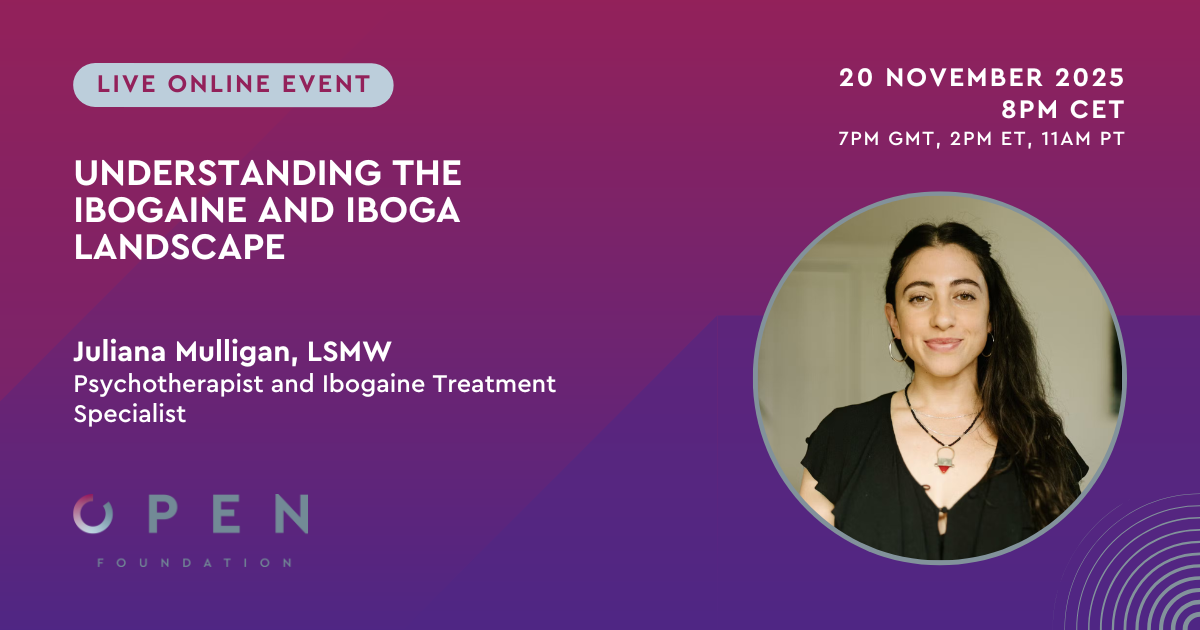At least since William James, scholars of religion have wondered if mystical experiences induced by means of chemical substances are similar or identical to, and have the same value as, naturally occurring ones. Lengthy debates ensued throughout the 20th century, fuelled in part by scientific research such as the classic Good Friday experiment conducted in 1962 by Walter Pahnke. As the discussion on these experiences induced by external means, and their implications, goes on today, Zygon: Journal of Religion and Science (vol. 49, no. 3) has devoted a section of its September 2014 issue to the potential religious relevance of entheogens [fusion_builder_container hundred_percent=”yes” overflow=”visible”][fusion_builder_row][fusion_builder_column type=”1_1″ background_position=”left top” background_color=”” border_size=”” border_color=”” border_style=”solid” spacing=”yes” background_image=”” background_repeat=”no-repeat” padding=”” margin_top=”0px” margin_bottom=”0px” class=”” id=”” animation_type=”” animation_speed=”0.3″ animation_direction=”left” hide_on_mobile=”no” center_content=”no” min_height=”none”][1].
In the first of four articles, Ron Cole-Turner focuses on the recent psilocybin research at the neuropsychopharmacology group at Imperial College London by Carhart-Harris et al. (2014), whose findings depart from the view that psychedelics increase neural activity in the brain. On the contrary, the researchers found that psilocybin decreases neural activity in the default mode network [2], which they suggest is the “seat of the ego”. This result is “highly suggestive in terms of how psilocybin might function in the brain to “occasion” mystical experience,” Cole-Turner writes. The author however takes issue with the “pejorative” label of “magical thinking” the London researchers associate with the subjects’ supernatural interpretations of their experiences. Here, he draws a line between the London research team and the team at Johns Hopkins [3] that also studies psilocybin. For the former, mystical quality seems to be an unwanted side-effect, writes the author, while for the latter it is the very focus of research, and a desirable feature. “More than science is at play here, and more than religion is at stake”, Cole-Turner concludes, wondering what we will make of what we are about to discover.
In the second article, William Richards, who worked with Walter Pahnke in the 1960s and has himself worked on recent psilocybin research, starts by stating that psychedelics “provide two new factors critical for religious scholarship […], namely potency and reliability”. This means that meaningful experiences can be safely induced in most subjects, and the author notes that over 200 persons have now safely received psilocybin within the framework of the Johns Hopkins psilocybin research. He goes on to define mystical experiences and distinguishes them along three binary dimensions: complete and incomplete, unitive and personal, and internal and external mystical experience. His research [4] has shown that both aspects of these dimensions are not mutually exclusive, as some scholars of religion have argued, and can be experienced by the same person. Richards lays out two avenues of potential interdisciplinary research for scholars of religion: the study of religious groups that use entheogens in a sacramental way, and collaborations with colleagues from other fields in the design of interdisciplinary studies with entheogens.
The Santo Daime religious movement, which uses the Amazonian brew ayahuasca as its main sacrament, is the focus of the third article, written by G. William Barnard. In the first, introductory part, the author distinguishes between the productive and transmissive theories of the brain. In the latter, consciousness pre-exists the brain, which serves as a transmitter to the human body and mind. The productive theory, on the other hand, posits that consciousness is altogether produced by the brain. If we were to take the transmissive perspective, then mystical or religious experiences are not just “the hallucinatory byproducts of cerebral malfunctions caused by the chemical activity of these substances”, the author writes. In the second part of the article, Barnard goes on to sketch the history and main theological tenets of Santo Daime. He suggests that “[Huston] Smith’s [5] desire to see the birth of a modern day mystery school that revolves around the sacramental use of entheogens has, in fact, been fulfilled”, citing the Native American Church, and the Brazilian União do Vegetal religious group as other examples. In Barnard’s view, one of the primary reasons for Santo Daime church members to uphold their strict discipline is the extent of spiritual transformation and physical healing their practice provides.
In the last article, Leonard Hummel underscores the importance of lasting effects from mystical experiences, and notes that the Johns Hopkins study [6] did look for and found desirable long-term effects in the lives of participants. Hummel contends that the validity of drug-induced mystical experience is hardly ever questioned anymore, despite criticism that research focuses on the individual religious experience (“a momentary sense of wow”) rather than on its repercussions in the community. In his view, these criticisms are not in line with the reality of either ongoing (clinical) trials (which include questionnaires about the effects on the community practices of participants), or of existing religious communities such as Santo Daime or peyote churches. He also hypothesizes that the Council on Spiritual Practices intends to give rise to recognized entheogen-based religious communities in the US. Hummel does not envision, however, the use of entheogens in Christian communities in the US, underscoring – among other things – possible health hazards, due to the possible lack of an adequate setting. Therefore the author concludes that the administration of entheogens had better remain confined to a therapeutic setting.
All articles appear in the September edition of Zygon: Journal of Religion and Science (volume 49, no. 3), The Potential Religious Relevance of Entheogens.
[1] “Entheogen” is a synonym for “psychedelic” that is often used in a religious context. Literally, it means a compound that “generates the divine within”.
[2] The default mode network is a network of brain areas that is mainly active in a state of rest, when attention is more focused inwards than outwards.
[3] See for example Griffiths et al. (2006).
[4] Richards (2008).
[5] Huston Cummings Smith is a well-known religious studies scholar from the United States.
[6] Griffiths et al. (2006).
References
Barnard, G. William (2014). Entheogens in a Religious Context: The Case of the Santo Daime Religious Tradition. Zygon: Journal of Religion and Science, 49(3), 666-684. [Abstract]
Carhart-Harris, Robin L., Robert Leech, Peter J. Hellyer, Murray Shanahan, Amanda Feilding, Enzo Tagliazucchi, Dante R. Chialvo, and David J. Nutt (2014). The Entropic Brain: A Theory of Conscious States Informed by Neuroimaging Research with Psychedelic Drugs. Frontiers in Human Neuroscience 8. doi : 10.3389/fnhum.2014.00020 [Abstract]
Cole-Turner, Ron (2014). Entheogens, Mysticism, and Neuroscience. Zygon: Journal of Religion and Science, 49(3), 642-651. [Abstract]
Griffiths, R. R., Richards, W. A., McCann, U. & Jesse, R. (2006). Psilocybin can occasion mystical-type experiences having substantial and sustained personal meaning and spiritual significance, Psychopharmacology, 187, 268–283. [Abtract]
Hummel, Leonard. By Its Fruits? Mystical and Visionary States of Consciousness Occasioned by Entheogens. Zygon: Journal of Religion and Science, 49(3), 685-695. [Abstract]
Richards, W. A. (2008). The Phenomenology and Potential Religious Import of States of Consciousness Facilitated by Psilocybin. Archive for the Psychology of Religion, 30, 189-199. [Abstract]
Richards William A. (2014). Here and Now: Discovering the Sacred with Entheogens. Zygon: Journal of Religion and Science, 49(3), 652-665. [Abstract][/fusion_builder_column][/fusion_builder_row][/fusion_builder_container]











